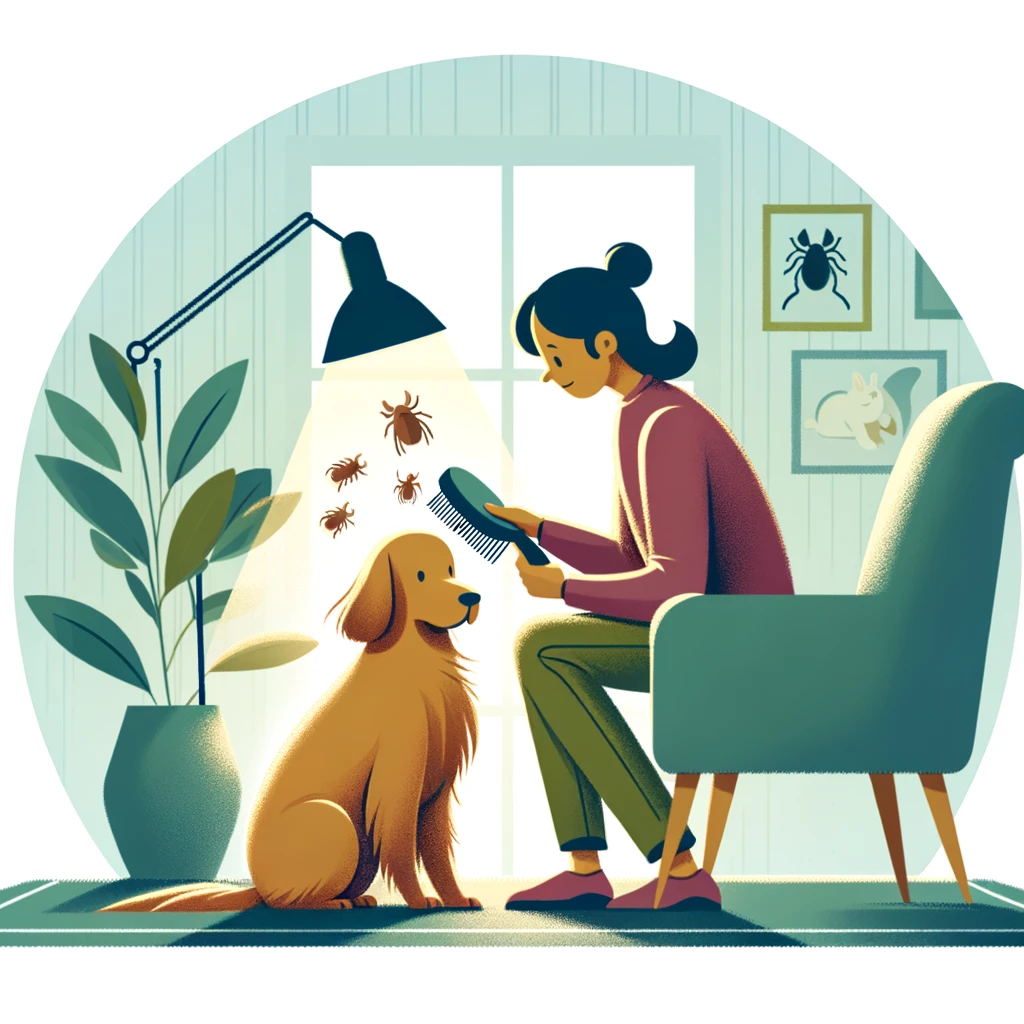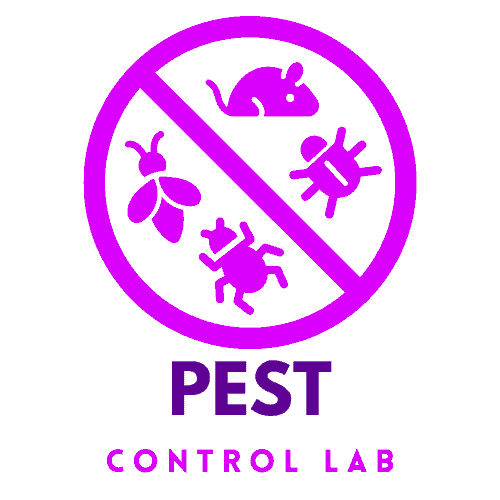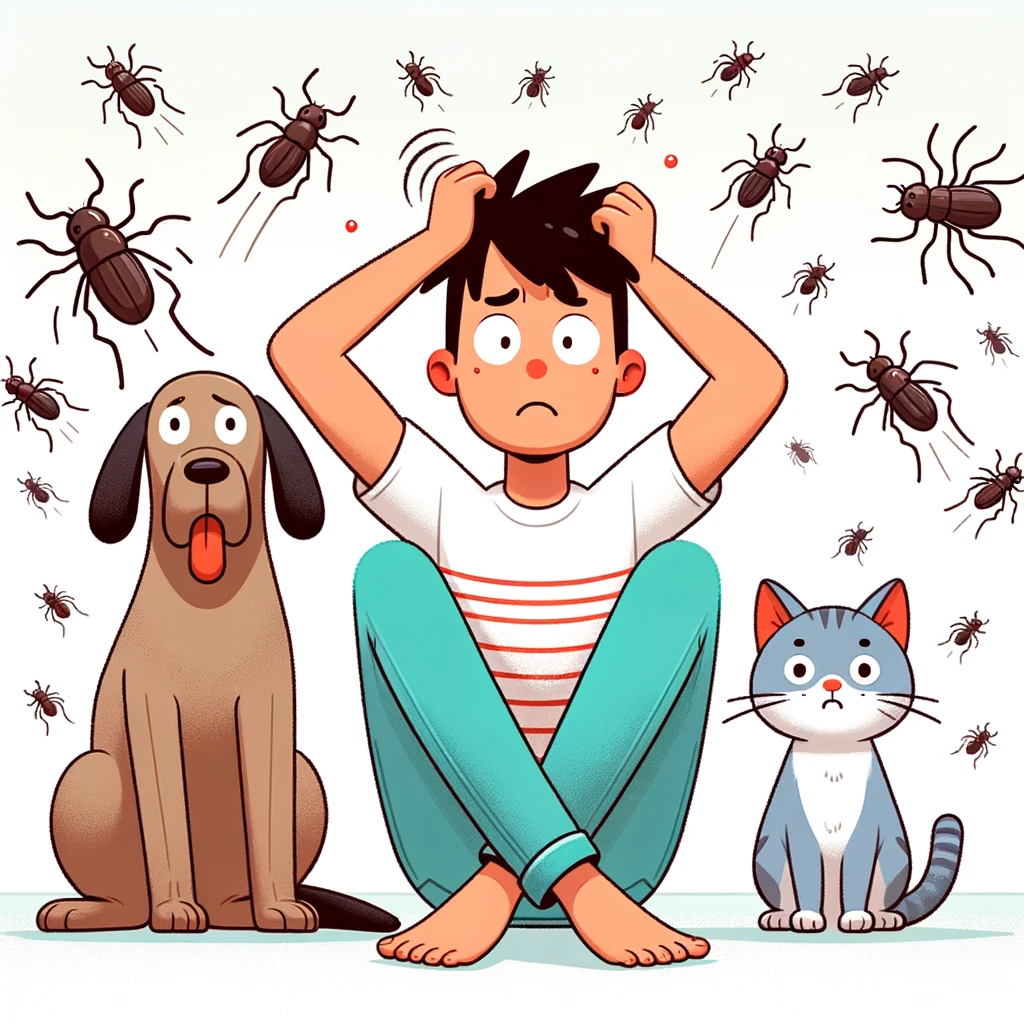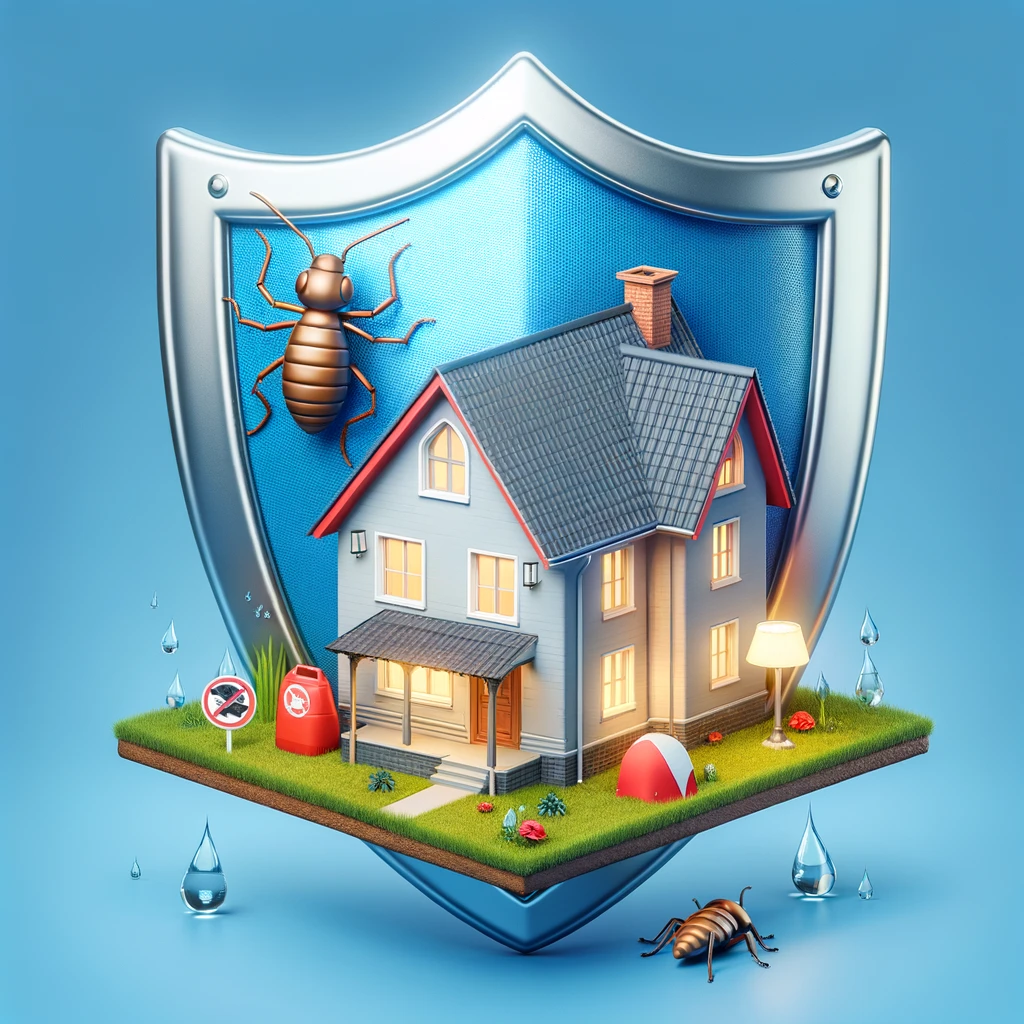Effective Mites Control: Protect Your Home and Pets
Key Takeaways
- Mites are a diverse group affecting homes and pets.
- Prevention and early detection are crucial.
- Natural and chemical treatments have their place.
- Professional help may be necessary for severe infestations.
- Innovations in mite control offer future hope.
You’re enjoying a quiet evening at home, curled up with a good book, or perhaps snuggled with your furry friend. And the last thing on your mind is the invisible world of mites lurking in corners or hitching a ride on pets. Yet, these tiny creatures can significantly impact our comfort, health, and sleep quality. This guide aims to demystify the world of mites. Shedding light on the types that could affect your living space and your pets and offering practical strategies for keeping them at bay. Ready to dive in? Let’s tackle these microscopic intruders together.
The Invisible Threat: Understanding Mites

Types of Mites Affecting Our Homes and Pets
In the vast world of mites, several types enjoy making our homes—and, by extension, our lives—a bit more challenging. Spider mites, for instance, might prefer the great outdoors, but their penchant for destroying plant leaves by sapping them dry can indirectly affect our indoor green spaces. Meanwhile, Demodex mites take a more personal approach, feasting on our hair follicles and skin cells, often without our notice unless they trigger skin irritations.
Then there’s the familiar household nemesis, dust mites. These tiny beings are practically everywhere, thriving in our homes. Warm, humid corners, feeding on our shed skin cells and potentially stirring up allergies. Chiggers, though less common indoors, pose a risk during outdoor activities, leading to itchy, irritating bites.
On the other hand, scabies mites are tiny invaders that burrow into human skin, causing intense itching and discomfort. Pets are not spared, with ear mites causing distress through itchy ears and inflammation. Then there are the less common but equally troublesome rodents and bird mites, which can infest our homes following their primary hosts and cause various health issues.
Understanding these mites’ habits and preferences is the first step in creating a battle plan against them. By recognizing the signs of their presence, we can take proactive measures to mitigate their impact on our health and comfort.
The Health Risks Associated with Mites
While mites might seem like nothing more than microscopic nuisances, they can pose genuine health risks to both humans and pets. Dust mites, for instance, are infamous for triggering allergic reactions. These reactions aren’t a direct response to the mites themselves but to the proteins in their waste products. Symptoms can range from mild (sneezing and itchy eyes) to severe (asthma attacks), significantly affecting the quality of life for those allergic to them.
Then we have scabies mites, which burrow into the skin and cause scabies, a condition characterized by intense itching and a pimply rash. It’s not just the physical discomfort; scabies can lead to secondary infections from scratching and can be stressful to manage. Especially in crowded living conditions where it spreads quickly.
Pets face their mite adversaries, too, with ear mites leading the charge. These pests cause inflammation and intense itching in the ears of dogs and cats, leading to scratching that can result in infections. Similarly, mites like Cheyletiella can cause “walking dandruff” in pets, a condition where the mites move under the scales of the pet’s skin, making it look like the dandruff is moving.
Understanding these health risks is crucial in recognizing the importance of mite control. It’s not only about maintaining a clean and comfortable home environment. It’s also about protecting the health and well-being of everyone living in it. Taking proactive steps to manage mite populations can significantly reduce these risks and lead a healthier life for you and your pets.
Battling Mites in the Home Environment

H3: Preventive Measures to Keep Mites at Bay
Prevention is better than cure, especially when it comes to mites. Keeping your home clean and reducing clutter can significantly lower the risk of mite infestations. Dust mites, for example, thrive in warm, humid environments, making it essential to maintain a dry and well-ventilated home. Regular vacuuming with a HEPA filter vacuum cleaner can capture these tiny pests and reduce their numbers. Likewise, washing your bedding, curtains, and any removable fabric covers in hot water weekly can kill dust mites and remove their allergens.
Humidity control is another crucial factor in mite prevention. Using dehumidifiers to keep indoor humidity levels below 50% can make your home less hospitable to dust mites. For pets, regular grooming and check-ups can help catch and treat mite infestations early, preventing them from spreading to humans and other pets.
Ensuring your indoor plants are not infested with spider mites is another aspect of maintaining a mite-free environment. Spider mites prefer plants under stress, so keeping your plants healthy and well-hydrated can deter these pests. For outdoor activities, applying insect repellent and wearing protective clothing can help prevent chigger and scabies mite bites.
Adopting these preventive measures can make a big difference in controlling mite populations in your home and protecting your family and pets from their adverse effects. Consistency is key to keeping your environment clean, dry, and mite-free.
Natural Remedies vs. Chemical Solutions
When it comes to mite control, the debate between using natural remedies and chemical solutions is ongoing. Both methods have advantages and drawbacks, and the best choice often depends on the severity of the infestation and personal preferences for safety and environmental impact.
Natural remedies offer a safer, more eco-friendly approach to mite control. Essential oils, such as tea tree, eucalyptus, and lavender, have been touted for their mite-repelling properties. A few drops of these oils in a spray bottle filled with water can make an effective mite deterrent for bedding and furniture. Diatomaceous earth, a naturally occurring, non-toxic powder, can be sprinkled in areas where dust mites proliferate, like carpets and pet bedding, to dehydrate and kill the mites without harmful chemicals.
On the other hand, chemical solutions can provide a more immediate and potent method for eliminating severe mite infestations. Acaricides, which are pesticides specifically targeting mites and ticks, can be effective but should be used cautiously. Over-the-counter and prescription treatments, especially for pet mites like ear mites and scabies, can offer relief and control with proven efficacy. However, using chemicals raises concerns about potential health risks to pets and humans and environmental impact.
The key to successful mite control lies in balancing effectiveness with safety. Natural and chemical methods may sometimes be necessary to eradicate an infestation. Whichever route you choose, always prioritize the well-being of your household and pets, and consider consulting a professional for severe infestations.
Protecting Our Furry Friends from Mites

H3: Recognizing Signs of Mite Infestations in Pets
Our pets often suffer silently from mite infestations, making it crucial for pet owners to recognize the signs. Ear mites, for example, are a common ailment in cats and dogs. They lead to constant scratching of the ears, head shaking, and a noticeable buildup of what looks like coffee grounds within the ear canal. If your pet exhibits these behaviors, it’s time for a vet visit.
Scabies, or sarcoptic mange in pets, presents another challenge. Dogs with scabies might show signs of relentless itching, red and irritated skin, hair loss, and, in severe cases, crusty skin lesions. These symptoms usually appear in areas less covered by fur, such as the belly, ears, and elbows.
Another telltale sign of mite infestation in pets is “walking dandruff,” caused by Cheyletiella mites. This condition appears as flaky skin that moves due to the mites’ movements underneath. It can be pretty alarming and uncomfortable for your pet.
Prompt recognition and treatment of these symptoms are vital to your pet’s health and can prevent the spread of mites to other pets and even humans in some cases. Regular check-ups, grooming, and maintaining a clean living environment for your pets can help catch and manage these issues early.
Effective Treatments for Pet Mites
Effective treatment is paramount once a mite infestation is suspected or identified in a pet. For ear mites, vets prescribe topical medications directly to the ear canal. While highly effective, these treatments require accurate diagnosis and follow-up care to eradicate mites.
Scabies in pets necessitate a more aggressive treatment approach, often involving prescribed medicated shampoos, topical ointments, and sometimes oral medications. Since scabies mites can burrow into the skin, treatment must penetrate deep enough to reach and eliminate them. It’s also essential to treat all animals in the home to prevent re-infestation, as these mites can move between hosts.
Treatment for mites causing walking dandruff may include medicated baths and, in some cases, oral medications. Regular grooming and cleaning the pet’s environment are crucial to preventing a recurrence.
It’s worth noting that while over-the-counter mite treatments are available, they may not be effective against all types of mites or infestations. Moreover, incorrect use can lead to resistance or exacerbate pet health issues. Always consult a veterinarian before starting treatment, as they can provide the most effective and safest options tailored to your pet’s specific needs.
Pet owners play a crucial role in preventing and treating mite infestations. Being observant of signs of distress, maintaining a clean environment, and seeking prompt veterinary care can make a significant difference in the health and well-being of our furry family members.
Advanced Mite Control Techniques

Professional Pest Control: When to Call in the Experts
There comes a point in the battle against mites where the do-it-yourself approach may no longer cut it. This is particularly true in cases of severe infestation or when dealing with persistent mites that resist home treatments. Professional pest control services bring expertise, specialized equipment, and advanced treatment options. They can assess the situation accurately, identify the types of mites present, and implement a tailored eradication plan.
Calling in the experts is recommended when you’ve tried multiple remedies without success or when the infestation is widespread, affecting various areas of your home or pet’s environment. Pest control professionals can also advise on preventive measures to avoid future infestations, ensuring your home remains a mite-free zone.
Future of Mite Control: Innovations and Advances
The future of mite control looks promising, with ongoing research and technological advancements offering new hope. Scientists are exploring environmentally friendly and more effective methods to combat mites, such as biological control agents that prey on mites without harming beneficial insects or the environment. Additionally, advancements in genetic research may lead to the development of mite-resistant plant varieties and pets, reducing the reliance on chemical treatments.
Innovative detection methods, including sensors and AI, are being developed to identify infestations early, allowing prompt and targeted treatment. These technologies could revolutionize pest management, making it more efficient and less intrusive.
As we look to the future, we focus on developing sustainable, safe, and effective mite control methods that minimize health risks to humans and pets while protecting our environment. Embracing these innovations will be key to staying one step ahead in the ongoing battle against mites.
Wrap It Up
Knowledge and vigilance are our best defenses in the microscopic world of mites. By understanding the types of mites that can invade our homes and affect our pets, recognizing the signs of infestation, and employing effective prevention and control strategies, we can protect our health and ensure the comfort of our living environments. Whether through natural remedies, chemical treatments, or the assistance of professionals, tackling mite issues head-on will help us maintain a happy, healthy home for ourselves and our furry friends.
FAQs
- What are the most common types of mites in homes?
- Dust mites, spider mites, and scabies mites are among the most prevalent.
- How can I tell if my pet has mites?
- Look for signs like excessive scratching, skin redness, and, in the case of ear mites, dark discharge from the ears.
- Are there any effective natural remedies for mite control?
- Yes, essential oils and diatomaceous earth can be effective against certain mites.

































